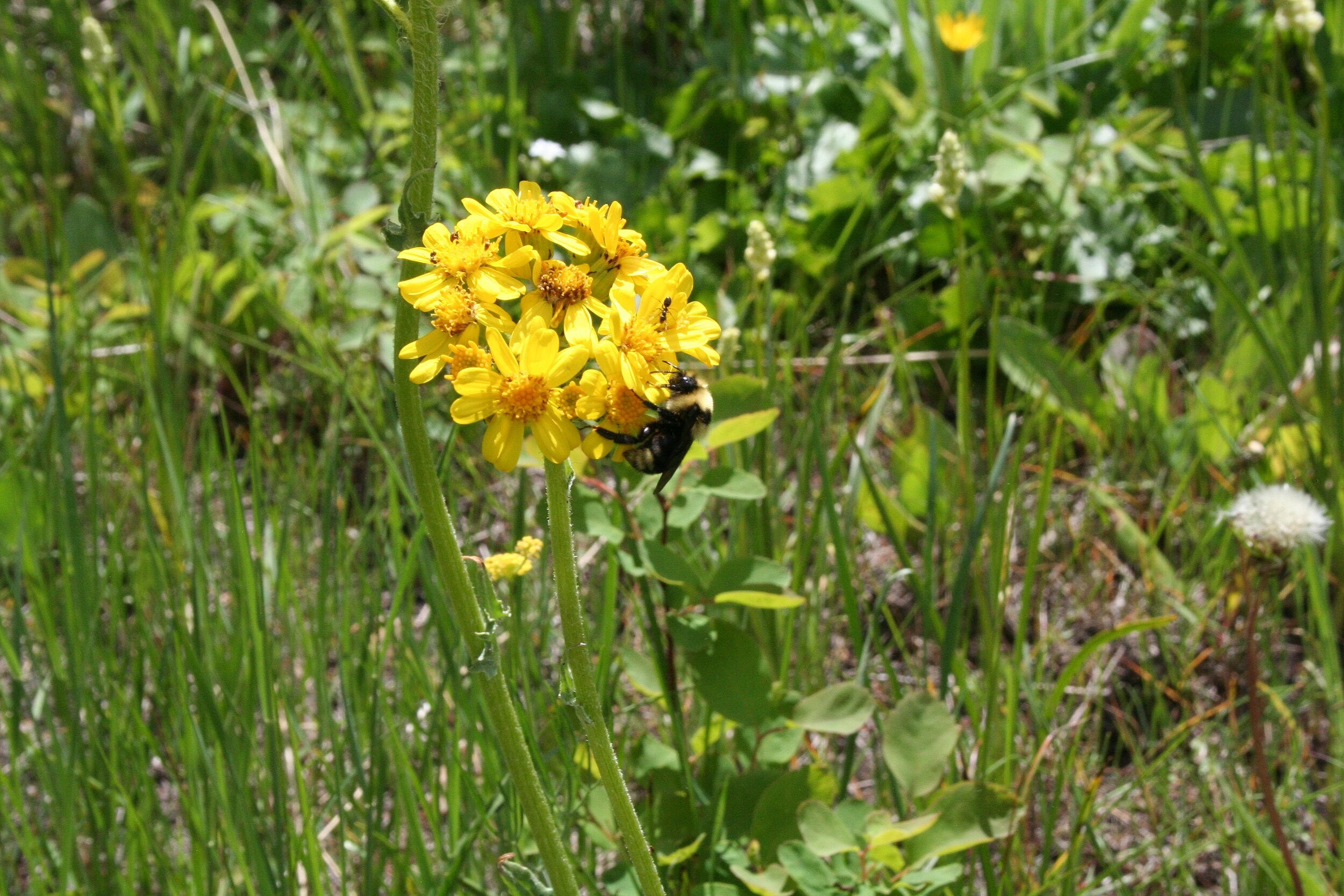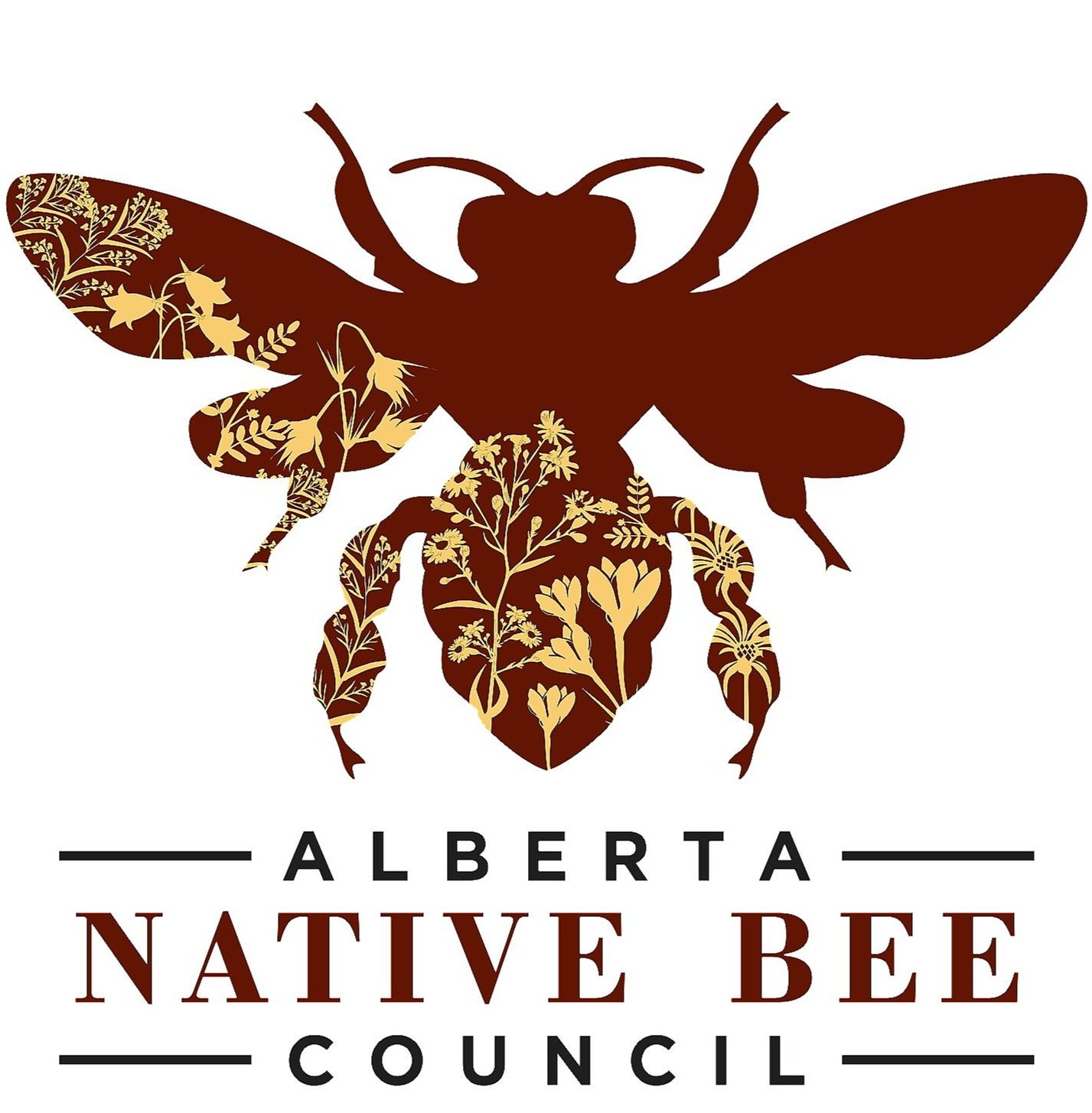
What is a Bee?
Basic Bee Biology
Bees are insects that feed on the pollen, nectar (and sometimes floral oils) from flowers. They are immensely diverse and form an important group within the Hymenoptera, an insect order that also includes ants, wasps, and sawflies. Worldwide, there are an estimated 20,000 species of bees, with approximately 375 species native to Alberta. Alberta species range in size from tiny Nomada bees about 3 mm long to robust bumble bees that are up to 25 mm. They vary in colour from all black, metallic green, blue and red; and white, orange, yellow, or black striped.
Native bees come in a wide range of sizes. They also vary in their shapes, life styles, places they frequent, nests they build, flowers they visit and season of activity. They remain unnoticed by most of us and yet they provide valuable services to all kinds of flowering plants, from wild flowers to some important crops.
Bee Anatomy
Bees are insects. They have six legs and can fly. Like all insects, they have three main body parts: head, thorax and abdomen. Attached to their thorax, they have six legs and two pairs of wings.
Many bees have very furry bodies and the hairs are feathery, better for trapping loose pollen. Most types of female bees have some sort of adaptation (called a scopa) that they use to carry pollen back to their nests. Bumblebees, for example, have a basket-like structure on their last legs (called a corbicula) where they pack pollen. Megachilid bees (leafcutter bees) collect pollen on the underside of their abdomens. Other types of bees have hairs on their legs where pollen accumulates. Male bees and cuckoo bees aren’t responsible for provisioning nests and so don’t have special pollen-carrying body parts.
Female bees have their egg-laying structure (called an ovipositor) modified into a stinger. Some wasps have this too, but bee stingers are barbed. Some bees don’t sting, however!
Most bees have a fairly long tongue to sip the nectar usually buried in the heart of the flower, and a large crop or a second stomach for carrying it.

